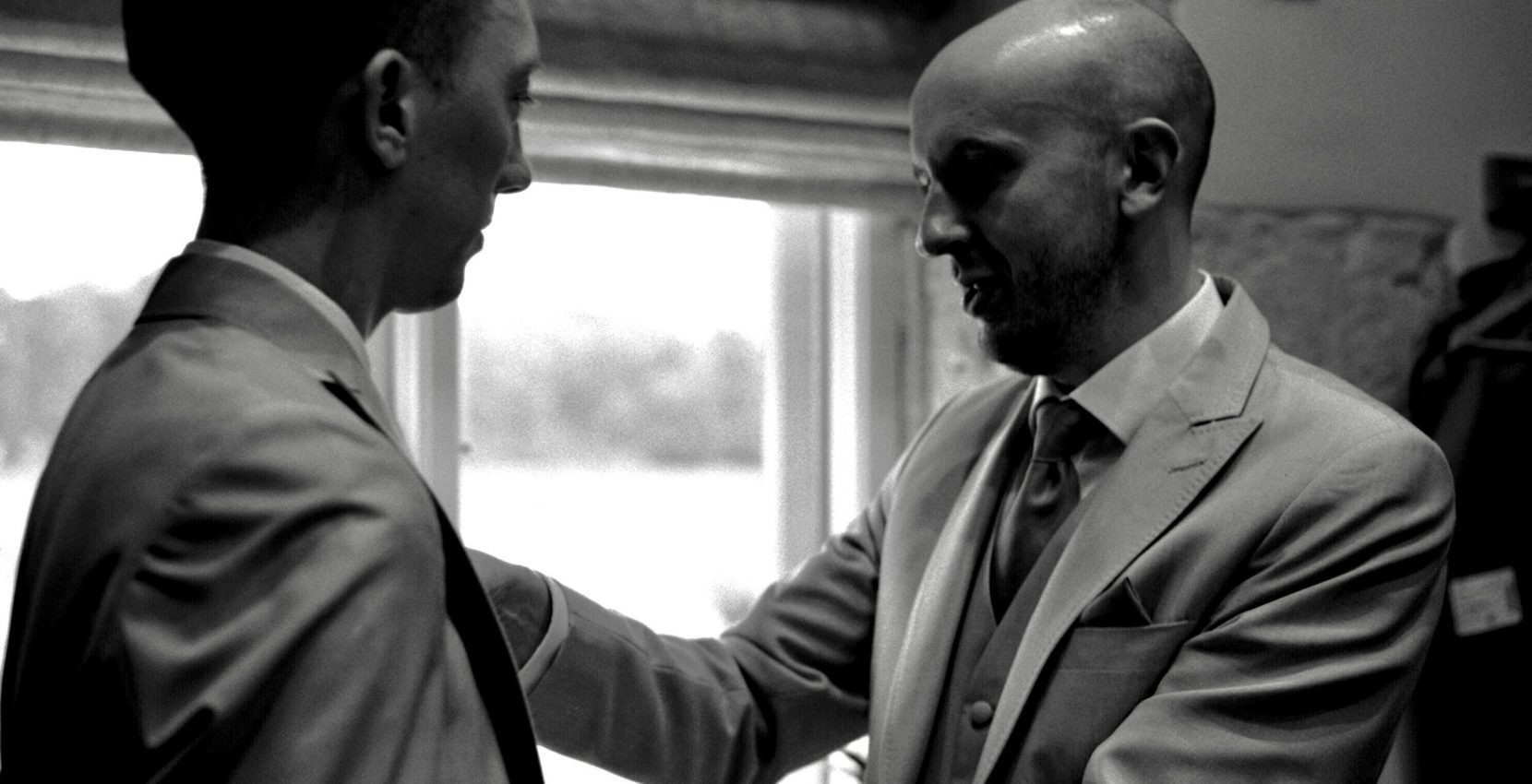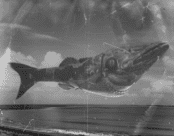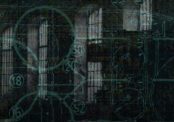Pounding drums, swaggering guitars, and rolling bass The Heat Inc. stand tall as a hirsute nod to those garage rock forebears who elevated the rude primalism of low-music to sacred heights. A timeless classicism that appeals to the chthonic drives that pulse through our bodies; unconscious but not forgotten.
Showcasing their video for their single Your After Love Song, Trebuchet caught up with Jon Dodd, photographer and singer with the band about his creative process, light and their new single.

What do you love about photography?
For me, it’s always been about the ability to capture a moment in time and space. You listen to Asimov talk about it and he points out that before photography there might as well have been nothing. Nothing and no-one that we could see, at any rate.
I mean sure, you have painting but who had their portrait painted before 1840? Kings, queens, the nobility, maybe a merchant or two but rarely a commoner. It was just too expensive. Too impractical. Plus, painting is a compromise at best. It’s not an accurate depiction of reality, whereas with the advent of photography, we finally had this tool, this incredible ability to make the world stand still.
Polaroid photography is both a wonderful example and an exception because it’s an alchemical process of sorts, one that so beautifully straddles the line between art and science but it was designed and marketed to be available to everyone.
Edwin Land was almost democratic, in a way. Everyone and their grandmother could take a picture and it would be an accurate, albeit painterly depiction of a moment in time. Actually, it’s not only a picture of a time and place and the people and objects therein but it’s also physically, necessarily from that point in time, which makes each and every one of them a special sort of artefact. It’s about making everything stop, just for a second and then being able to look back at that image and get a feeling or a memory by doing so. It’s about extrapolating meaning from the past.
Not that I’m saying you can infer meaning to just anything and be right about it – I think there’s material out there that was never meant to be material and I think you can look back at conversations that Strummer had anytime shortly before the millennium and say man, he really got out in time. The same way as you might say that Bowie had seen all that he wanted to see – but if you are choosing to shoot life, then the accidents have to be part of that.
Those are the things that make a great photograph. Those are the things, outside of a gratuitous, aggressive marketing campaign that sell your album. There needs to be a beginning and an end to everything and very few things sum that up quite so succinctly as a shutter. If you’re going to be picky but it’s got to be great then it has to be Tulsa, even if you’re not Larry Clark. If you want to pick any single moment in your life thus far, it’s not something that’s going to happen again, never in exactly the same way that it did and if it did, it would not only be an aberration, it wouldn’t mean the same thing and that’s directly correlated to our understanding of time.
Of course, the irony now is that with Photoshop and Lightroom or whatever other editing tool you like, a photograph isn’t necessarily an accurate representation of anything at all. If anything, it’s more like painting now than it ever has been and it’s most likely a total fabrication. That’s an art form in and of itself. It’s just not the thing that I love.
What is your relationship to the intimacy of a moment captured on film?
That depends on the subject and as far as I’m concerned, it’s always going to change depending on how well I know the place, person, whatever at the time. I guess if it’s a moment then I need to be there in person, if I’m going to take it, I mean. Which would then mean that I could always look back at it and experience a moment again, in that way.
If I’m not the person who took it, it depends; have I been to that place? Do I want to go? Have I met that person? Do I know an object or a thing in the photo? Am I in the photo? There are so many variables but in that case, I suppose it’s more like appreciating a work of art than it otherwise would be. If it’s a photo I took or a record I made or was part of then there’s always an aspect of the work to it and the most satisfied I can ever be is to be able to walk away.
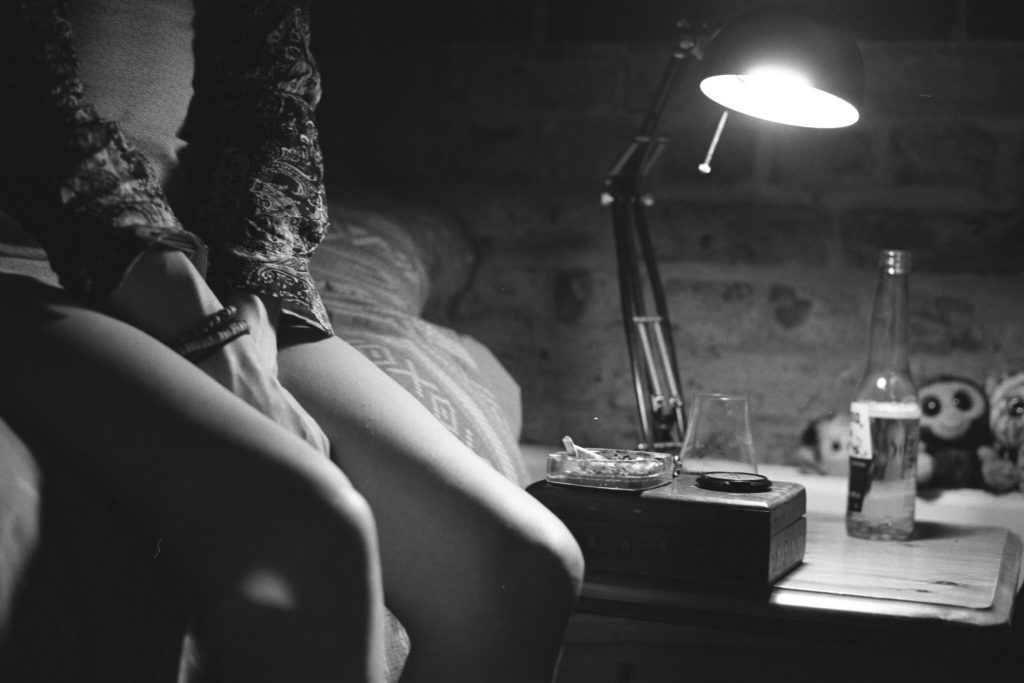
Shooting film helps with that compulsion because you don’t have any choice in the matter. You take your photo and you’re done. You can take another photo if you like and I do opt for a safety but beyond that?
I don’t think it’s really possible to explore the question fully – what is my relationship to the intimacy of a moment – unless we’re talking about a specific photograph. Some stuff was very deliberate and I cared about it. Other stuff was deliberate and I did it because I was getting paid. Other, other stuff happened by complete accident and I don’t know what to tell you there. I wouldn’t show it to anyone if I didn’t think it was interesting, at the very least.
With anyone else’s work, I have the same reaction anyone else has. It’s either a good photo or a bad photo and by that, I mean that I either like it or I don’t. I think that should be everyone’s barometer because it’s the only one that really matters.
Perhaps it’s most accurate to say that my reaction to one of Joel Brodsky’s Morrisons would be different to yours, which is always going to be the most interesting thing of all. What I personally find in any of Horace Warner’s portrait orphans is going to be different from what you find, although we might agree on some things. We might agree that there’s smoke, if not fire in David Hamilton’s many empty mansions but man, the guy knew how to put vaseline on glass. We don’t have to talk about photos at all. They don’t always demand it but they might be at their most compelling when they do.
Why old cameras?
I’ll go back to what I was saying about editing tools etc,. I hate all that shit. I mean, yeah, I can appreciate why it’s a useful tool and everything and why people use it, it’s just that I’m not any good at it whatsoever! I use it when I have to, i.e. for light correction and white balance, when I’m tearing my hair out trying to scan a Polaroid but for the most part, it’s just another wholesale hassle that I would rather not be engaged with because I don’t find it engaging. It’s so far removed from the moment.
I love older, analogue cameras for many of the same reasons that I love older guitars. They have a character to them which the new stuff doesn’t…yet. Don’t get me wrong – I’ve bought X numbers of new American Teles because they’re workhorse guitars that are just the most infallible instruments in almost any situation and they will run the course, most likely outliving the owner and you don’t worry about them in the same way that you might worry about a 1970s Jag – but that’s not where I’m at with photography.

I want something with a bit of character because an interesting camera is interesting in the same way a vintage six string is interesting and it’s going to make you want to take a certain sort of picture or write a certain sort of song. I don’t want something that I’m going to want to go Ramones on but feel the need to handle with/without kid gloves because it’s a Hasselblad.
The two, music and photography are often interchangeable for me, depending on what mood I’m in and if I can reach for a totem that inspires a feeling, suits a particular environment or subject or even just the weather, then I’m going to choose that and throw it in a bag and go. Give me an AE-1P and a roll of TMAX. Give me a Sun 660. They’re built like tanks. Give me a Trip-35 and a stupid cheap flash and a pack of Portra and I’ll shoot stuff in the dark.
It is about being in the moment.
It is about going a little further down the road with these objects, these eerily accurate brushes of yesteryore and seeing what else we can shake out of this thing called life. When I started with The Noisy Alchemist, I nearly ended up calling it something like, ‘What Else?’ Not as a reflection of what else there was to talk about, be it books or records or film or TV or video games or whatever, well, maybe that but mostly because of the photographic angle. We have these really well built tools that do this thing and some of them were made before or while I was still shitting my pants and if they’re treated with a modicum of respect, most of them will still be doing just that when I’m eighty-four and I’m shitting my pants again and either my kids or a nurse has to deal with it.
Between then and now, anything could happen and we might just capture some of it on film and that’s not something you can do with a digital camera. By all means, you can take a hundred shots in a minute or less with the latest mirrorless miracle and some of them might be great photos but how many of them are you never going to look at ever again? You might print one or two and you might overlook, cast out and delete ninety something other options that could have contained that one other moment that would have made someone else smile a sad little smile. Moreover, you won’t ever know about that one shot you glanced over because the “contact sheet” was so egregiously huge that you had too many options. With a roll of thirty-five shots, you’re limited and that forces you to make tough decisions and those are the things you might remember in twenty, thirty, forty years.
What makes a great photograph?
A little light and a little luck, usually in an equal and timely measure.
What aspects of your creative photographic work are echoed in your music?
I suppose when I compared cameras with guitars, that might miss the point because it’s not so much about the tool as it is the process. With digital, you can see what you’re getting right then, in real time and you’re making decisions in the moment that affect the moment and affect your flow. I’m sure there are photographers that have the kind of discipline and will power necessary to not do that but I know without doubt that I’m not one of them. There’s also no romance there. No mystery and then you’ve got the computer, too many photos and more plugins than all the gods combined. Fuck all of that. Same with the studio with bands.
I want to be in the moment, alive and live as possible and I want that to be on tape, confessional and all and then I want to pick from four to six takes before we do anything else or even consider going ‘round again. Pro tools is my go-to but I could do without it all together, in an ideal universe adjacent to this one. I’d much sooner be making those adjustments in situ, in the studio. Which microphone needs moving? Is the bassist comfortable? Does it sound right in the room? That’s the way Nico and I worked with DEAF YETi, with Teo Miller at Cowshed studios and I’m still really happy with that record. It’s the blues but not quite as you know it but we went into it with the same kind of ethos. You cook it and you cut it and that’s about the size of it.
Same with photography, before and after. What’s your frame now? What’s in there? Where’s the light and how much do you care? I mean, always but sometimes a silhouette is the game. What happens after that? Are you shooting instant in Prague in January because if you are, you’d better have a heat pack in your pocket, next to the packet if you want your shot to develop properly because that’s your damned dark room and granular, tactile ephemera like that really matters.
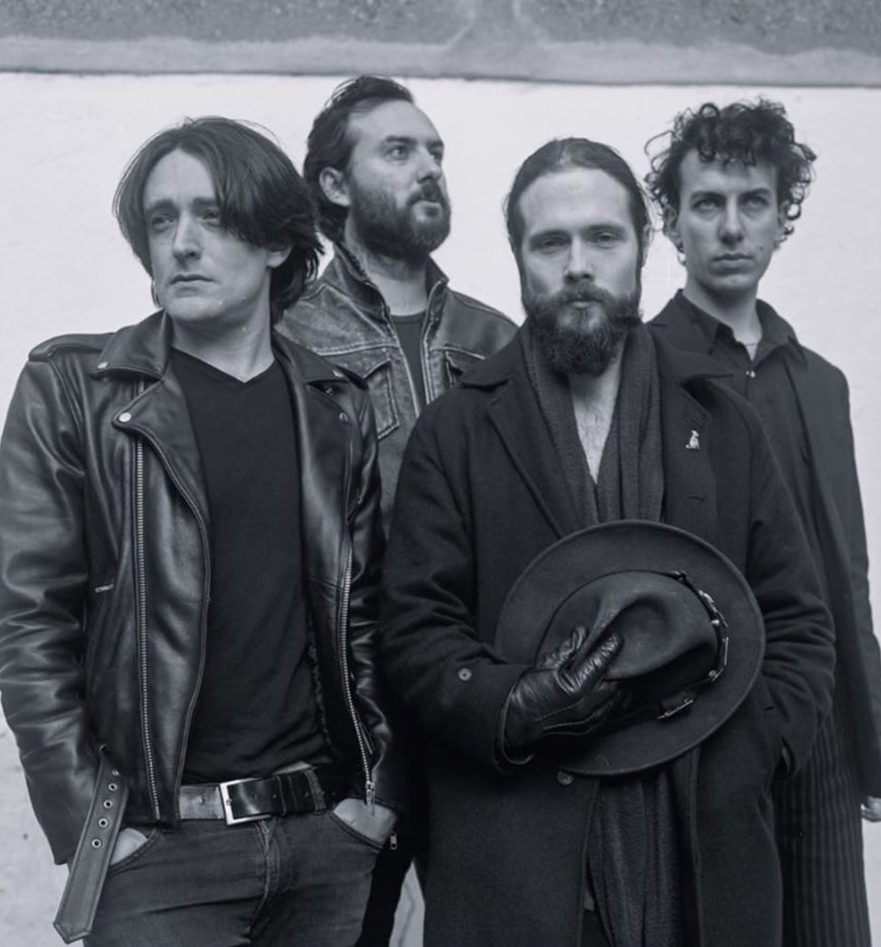
Dark rooms themselves are another thing entirely. Guy Bourdain was obsessive in the darkroom, Sam Haskins too but at least they had restraints. Imagine if they’d been shooting digital. Who knows what we would have lost if Newton had become pixel prone? Do we get those Rue des Cendriers shots then? Perhaps not. I want to take my shot, maybe three if I’m being slow or get the heebie-jeebies about some mechanical menace or if someone moved but then I want to be over and I want to move on. Who knows, maybe he/she/it blinked and it’s going to work in a super poignant way that I definitely intended to capture? If I’m shooting digital and I delete it in the immediate aftermath? Gone forever. No Bruce Davidson cigarette machine shot. No André Kertész accidental waltz at all. If I overlook it later on? That might be worse but if I have two or three sheets of real life 35mm to look over, I’m going to find something that makes me smile and some days that’s enough.
We’re lucky with The Heat Inc. to have Michael Smith at the wheel. Sure, we put stuff straight down to digital, at RYP Studios but we did it in a couple of days at most and we didn’t fuck about with it. He was happy for us to go at it with the drums and the bass and guitar and at least a guide vocal, meaning that even if we did six takes and then kept one really solid take on the rhythm section and dropped in for the guitars and the vocal again afterward, that core would maintain this rock ’n’ roll spirit. Yeah, it’s an amped up incarnation of that thing for 2020 and Michael has that Butch Vig polish down cold so the heart of it all – the heat, if you will – is still rock and/or roll and that’s entirely down to the nature of that approach; but it was always now or never and you gotta be good, you need to be quick and you have to be lucky.

Were you involved in the creation of your music video?
I’m in it with three other people who are also in it.
What makes a great music video?
It’s very much not my wheelhouse and I’d be lying if I said I cared too much because it’s a totally separate medium for me and it’s not one that I feel compelled or able to engage with in any way beyond being in one if it has to happen. They’re a necessary thing. How’s that?
At least, that used to be the case but Michael Wincott once told me that music videos aren’t all that important anymore, I think primarily because everyone has had one for every fucking track forever, for so long now that now that they’re just static. They’re neither music nor video in any meaningful sense to either discipline so I have to assume that there are music video aficionados out there who do not make music videos that are the demographic for these things. I’m not saying that they’re not an art type because they absolutely are but they’re a confluence that I don’t personally require.
I’ve seen music videos that I like and music videos that I don’t and I have a preference for certain things but it must depend on the song and the artist and the director and the intention of each of those things. The video has to match the song. With Your After Love Song, we wanted a visual that would speak to us as a band. The video for Raptors, was a deliberate removal of ourselves from at least part of the equation. We didn’t want it to be about us. We wanted it to be about the song and how it makes people feel. What we ended up with was a video that exemplifies perfectly how it made Joe Law, the actor in that video, feel and I think that’s fine and I think it’s beautiful. I’m not sure if it was Josh from QOTSA that said it but rock ’n’ roll is and always has been the fun machine and that’s what I get from both his performance and the meeting point between his performance and the song. He loses it.

With this song, we needed a different approach obviously but we were also told by people who know about these things that it was time for us to be in a video. Introductions are important. Some people told us they were disappointed to not see the band in a more classic, black and white studio setting for the first single so that’s what we went for. The track itself harks back to an era, certainly of Soundgarden, The Pixies, all those bands but it’s a Rolling Stones thing at the same time and I can only hope that someone out there digs it and makes that connection.
Tell me an anecdote about the video for Your After Love Song that will surprise viewers?
I don’t know if this is a surprising thing but it’s a thing and it definitely made things more difficult. We put the whole thing down in one afternoon at Resident Studios, in north London and we decided to do it on the hottest fucking day of the year. I wasn’t surprised, that’s what we always do.
We always seem to choose to be in the studio in the middle of summer, whether it’s for rehearsal or recording or shooting a video, pick any day in the middle of July and we’ll be corralled in a dark room with no air, no water and too much of everything else. Understand that we’re not coming to this band fresh. We’ve taken our sweet time to get to this point, to decide to keep it real simple, real loud and make the best of everything we’ve learned up to this point but doing all of that, over a period of time, it does something to your hearing. No matter how good your ear plugs are, if you choose to wear them and you should. Despite performing to playback of the track from the record, we wanted the feel to match up to that of the audio and for there to be as little disconnect as possible between the two. Anyone who’s ever shot or been in a music video for a rock band will know that a big part of that comes down to the drums. If Maurizio’s not hitting the kit, it’s not going to look like he’s hitting the kit and that’s a problem that’s only solved by pumping the track into the room at massive, realistic volume so that he can hit the snare like he’s trying to punch through a wall and have it meld with whatever else you’re hearing. And then you have to account for four relatively deaf persons and you have to do it again. And again. And again. To get the angles they needed, I’m going to say we must have run through the track at least thirty times that day.
Noise – noise at that kind of volume – does weird things to the body. It makes your heart jump and it makes you sweat. If you’ve not spent four hours in an insulated room, under tungsten lights, with three other mother fuckers, plus a camera crew, in the middle of the summer, playing rock ’n’ roll like that…I’ll leave the rest to your imagination. Anyway. We started off the day with both Marco and I wearing leather jackets but only he had the sticking power and I think I must have lost mine at some point. Probably after the first take. Naturally, that caused all sorts of problems in the edit, with them having to deal with this guy who appeared to manifest and vanish a jacket at will but to his undying credit, Marcello and the guys at This Studio Production made it work. Somehow, it continues to be a credit to them.
The Heat Inc.
Jon Dodd – vocals , Nicolas Rigot – bass , Maurizio Vitale – drums & Marco Simoncelli – guitar
Here is The Noisy Alchemist Website
https://www.thenoisyalchemist.com/tmax
To purchase Your After Love Song, go to:
https://theheatinc.bandcamp.com/track/your-after-love-song
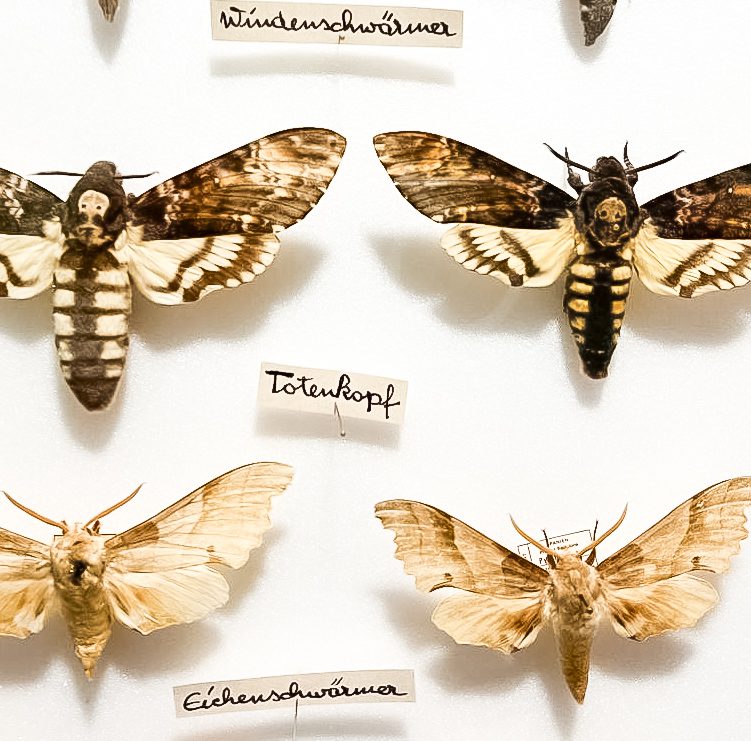
Ex-London based reader of art and culture. Specialist subjects include; media, philosophy, cultural aesthetics, contemporary art and French wine. When not searching for road-worn copies of eighteenth-century travelogues he can be found loitering in the inspirational uplands of art galleries throughout Europe.

